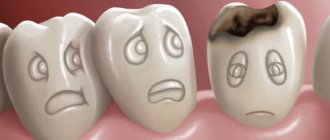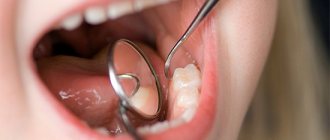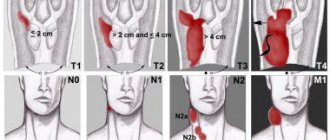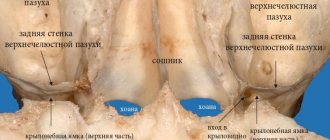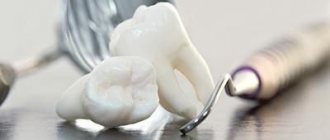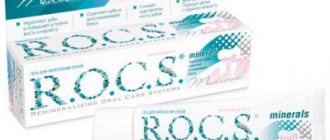Caries is the formation of pathological cavities in the tooth as a result of the process of tissue demineralization. In dentistry, there are several methods for describing this process, one of them is the Black classification of caries. How does this classification differ from others, what classification systems do modern dentists use? Let's look at these questions in the article. We will also consider the features of dental treatment in accordance with Black’s classification.
Types of classifications of carious lesions
A disease classification system is necessary to select the correct treatment method. In dental practice in different countries, a certain classification of pathology is followed. The classification is based on one principle.
The disease is described:
- by penetration depth;
- presence/absence of complications;
- on the dynamics of development;
- the nature of the course;
- according to the intensity of the process;
- localization of the lesion;
- according to the primacy of development;
- childhood caries:
- Black classification.
Let us consider the types of pathological formation and development in detail.
According to the depth of the lesion
This technique is used by dentists from the countries of the former USSR; it is convenient in practical use. The degree of development of a carious cavity is distinguished by the following characteristics:
- white spot stage - the beginning of the demineralization stage;
- superficial caries - pathology has not yet affected the dentin level;
- medium caries - pathology has affected the dentin, but has not affected the pulp;
- deep caries - there is a risk of cyst formation, periodontitis, pulpitis, etc.
Spot stage
Caries begins with the formation of a white (sometimes dark) spot on the enamel coating. The anatomical structure of the enamel is not damaged, it remains smooth to the touch. It is necessary to visit the dentist's office for preventive purposes in order to detect the initial stage in time.
Treatment at the initial stage takes place without pain and with minimal invasive intervention in tissue structures.
The white spot is removed using dental instruments, and the enamel layer is remineralized to restore its full structure.
Surface
When pathology destroys the surface layer of the enamel coating, we are talking about superficial caries. This stage of the disease is accompanied by the appearance of a reaction to sensations - cold / heat; sweet/sour. The integrity of the enamel is broken, so there is a feeling of roughness when touched with the tongue. At this stage of pathology, two types of treatment are used - classical preparation, grinding, followed by remineralization. The choice of method directly depends on the condition of the surface of the crown of the tooth.
Average
With average caries, the pathology affects the dentin layer and is accompanied by complete destruction of the enamel coating at the point of its localization. This process is characterized by the appearance of a stable pain syndrome, and not just a reaction to a sharp change in temperature. The affected areas are completely removed, and in their place the dentist forms an artificial missing part of the dental crown from a filling composite material.
Deep
With deep caries, internal structures are affected - dentin, pulp. If the tooth is not treated on time, it will end in a big complication. Most often, this stage ends with periodontitis, pulpitis, and cyst formation.
According to the development of the process and the presence of complications
Based on the nature of the development of the pathology, a distinction is made between simple carious lesions and complicated ones. With a simple lesion, the tissues do not become inflamed; the dentist simply removes the destroyed elements and restores the shape of the crown using dental material. This type includes superficial, medium, and deep caries.
In a complicated course of the disease, inflammation of the tissue structures and pulp is observed: most often it is pulpitis or periodontitis. A complication occurs when toothache is ignored and a delay in visiting the dentist.
By dynamics
This classification was proposed by doctor Vinogradova. There are three degrees of caries activity:
- compensated:
- subcompensated;
- decompensated.
Compensated activity is a sluggish process of formation of carious cavities, a minor affected area. The patient does not feel anything unpleasant and does not notice the onset of pathology. At this stage, pathological deformation can be stopped by using the remineralization method.
Subcompensated developmental activity is characterized by the average rate of progression of the pathological phenomenon. The patient does not feel any unpleasant internal changes. In the decompensated course of the disease, all processes are accompanied by acute toothache and intense destruction of dental tissue. The patient is so affected by the pain syndrome that he loses his ability to work and social activity.
According to the nature of the course
Caries occurs with different types of intensity:
- spicy;
- chronic;
- acute;
- secondary (recurrent).
Acute caries manifests itself as persistent pain for some time: several weeks. Chronic forms over a longer period of time, the dental crown loses its white color and turns dark.
The most acute type is observed in young children and adults after surgical removal of the salivary glands, accompanied by pathological dryness of the mucous membranes. Acute caries is characterized by a clinical picture of multiple lesions of molars. In children, this occurs against the background of weakened immunity.
A recurrent disease is always secondary caries, which develops against the background of some pathology or due to poor personal hygiene.
According to the intensity of distribution
In this regard, a distinction is made between single and multiple caries. There is also a generalized type, in which an entire row of teeth or a large number of molars in different parts of the oral cavity are subject to destruction.
By localization
This system is similar to Black’s system, which also classifies caries according to the location of the pathological focus:
- fissure;
- approximal (interdental);
- cervical (cervical);
- annular (circular);
- hidden.
Fissure caries is also called occlusal caries; it is formed in natural depressions on the chewing surface of molars/premolars.
The interdental is out of sight for a long time, as it is localized in the interdental space. The formation of a carious cavity can only be detected using an x-ray or during an examination of the oral cavity by the presence of dark areas on the surface of the enamel.
Cervical caries is formed as a result of poor oral hygiene or lack thereof. The lesion is localized at the edge of the gum at the neck of the tooth. Cervical caries that forms around the neck is called ring caries. This type of pathology is typical for children; it is extremely rare in adults.
Hidden caries is extremely difficult to detect. Located in inaccessible places: dental crevice.
Primary and secondary
Primary is a pathology that is first localized in a healthy area of the dental element. Secondary is a recurrent form of caries that forms on a previously treated area of a dental element (in place of an existing filling).
Caries in children
The classification of pediatric pathology does not differ from that of adults, with the exception of the reservation for baby and permanent teeth. Treatment of baby teeth is carried out according to a different scheme, since they are temporary. The classification of pediatric dental diseases proposed by Dr. Vinogradova is still relevant today:
- compensated:
- subcompensated;
- decompensated.
Compensated activity is a sluggish process of formation of carious cavities, a minor affected area. The patient does not notice the onset of the development of pathology. At this stage, the development of the disease can be stopped by using the remineralization method.
Subcompensated development activity is characterized by an average flow rate. The child does not feel pathological changes in the oral cavity. In the decompensated course of the disease, all processes are accompanied by acute toothache and intense destruction of dental tissue. The child is so affected by the pain syndrome that he loses interest in toys and motor activity.
Childhood caries is characterized by a long absence of symptoms of the formation of pathological cavities, because the disease develops inside the tooth. Parents will not be able to determine the onset of a carious lesion due to the lack of visible signs. A concomitant factor for the development of carious lesions is prolonged contact with the pacifier, due to which saliva acquires a viscous consistency.
Treatment of caries of the chewing teeth
| Tooth restoration with inlays, veneers, half-crowns made of photopolymer material using the direct method | 10,000 rub. |
| Applying a temporary filling | 500 rub. |
| Restoring a tooth with a filling I, II, III, V, VI class according to Black using chemical curing materials (preparation for a crown) | 3850 rub. |
| Tooth restoration with a filling I, V, Black class using materials from photopolymers | 4900 rub. |
| Tooth restoration with a Black class II filling using chemically cured materials using a fiberglass pin | 5500 rub. |
| Tooth restoration with a filling, class II according to Black, using materials from photopolymers (1 contact surface) | 6000 rub. |
| Tooth restoration with a filling, class II according to Black, using materials from photopolymers (2 contact surfaces) | 6500 rub. |
| Sealing the tooth fissure with sealant | 3300 rub. |
Classification of caries according to Black
The system was introduced in 1896 by the American dentist J. Black with the aim of choosing the optimal treatment method for an individual clinical case. The classification remains unchanged, only a sixth (last) class has been added.
This systematization of the development of pathological changes takes into account the localization of the lesion and the anatomical structure of the tooth:
- class - fissure caries;
- damage to the contact (lateral) chewing surface;
- damage to incisors and canines without damage to the cutting edge;
- carious damage to the cutting edge of the fangs and incisors;
- cervical caries.
- defeat of the hillocks.
With class 1 lesions, the grooves (fissures) on the crown of the frontal teeth, molars, and premolars are affected. These are anatomical depressions (pits) located on the chewing, vestibular (cheek) surfaces, as well as the palatal surface of the teeth.
With a second class lesion, the destruction affects several adjacent teeth (premolars, molars) that are in contact with each other.
With a third class lesion, the incisors and canines are affected, but without damage to the cutting part. A pathological cavity forms on the sides of the teeth on the contact surfaces.
With a fourth class lesion, a picture of complete destruction of the incisors and canines along with the cutting part of the crown is observed. The anterior dental elements are susceptible to this pathology.
The fifth class characterizes the clinical picture of cervical destruction of all groups of teeth.
The sixth class is demineralization of the cusps of molars/premolars and the cutting edges of the frontal dental elements. The reason for the appearance of this form of caries is associated pathologies: defective bite, pathological abrasion of enamel, inaccurately modeled dentures or implants.
The essence of the system
Black's classification of carious lesions is a system for dividing the disease into certain classes depending on the location of the destroyed area of hard tissue and the coverage of certain elements of the jaw row.
Despite the fact that this scale was developed more than a hundred years ago and does not include secondary and root caries, its use is widespread in modern dental practice.
Dr. Black identified 5 main classes of caries, to which another degree of development of the disease was later added.
The purpose of creating this classification was to select the optimal method of therapy - selection of a suitable material for filling and a method of preparing the affected surface.
The topography of types of cavities according to Black is well demonstrated in the following diagram:
Preparation
This term refers to opening a carious cavity, cleaning the tooth crown from necrotic elements and closing the cavity with a composite filling material.
Pathology 1st class
The treatment procedure for class 1 pathology is carried out in several stages:
- anesthesia - blocking nerve impulses from the localization of the lesion;
- opening the cavity, cleaning the enamel layer or dentin from affected tissues;
- expansion of the prepared area as a preventive measure;
- preparing the cavity for installation of a filling;
- filling;
- aesthetic gloss;
- illumination for curing.
When installing a filling, the final height of the tooth is important, because if the bite height does not match, the new filling may break or fall out.
Anesthesia is required for all patients with sensitive enamel, regardless of the depth of the carious cavity. For deep and medium caries, pain relief is mandatory.
The procedure for treating class 2 pathology involves establishing tight contact between adjacent teeth and strong adhesion of the composite filling material to the dentin tissues. Strong adhesion of the composite is possible only with an enamel coating; certain difficulties arise with dentin. Therefore, when installing a filling, a special binder is used - adhesive.
Pathology 2nd class
The treatment procedure for class 2 pathology is carried out in several stages:
- anesthesia;
- opening of a pathological cavity;
- correction of the gum edge (if necessary);
- restoration of the enamel coating in its absence;
- application of composite material - filling;
- aesthetic gloss;
- illumination for curing.
Also, for the second class of treatment, it is important to select a composite material in accordance with the tone of the bone tissue, because this type of caries is localized in the frontal part of the oral cavity. Careful selection of the composite color is necessary so that the filling does not look like a patch on the tooth. This work requires great skill of the dentist, since the aesthetics of the patient’s smile depends on it. It is important not only to free the tooth from necrotic tissue, but also to make it beautiful.
A peculiarity of installing a filling in the treatment of class 2 caries is the risk of inflammation of the mucous membranes due to the overhanging edge of the filling. Therefore, during installation, precautions should be taken: carefully check the comfort when closing/opening the mouth, during chewing and biting movements.
Pathology grades 3 and 4
The treatment procedure for class 3 and 4 pathologies is carried out in several stages:
- the enamel is cleaned of bacterial plaque;
- a composite is selected according to the color of the tooth;
- anesthesia is administered;
- The carious cavity is cleaned from necrotic elements;
- correction of the gingival margin (if necessary);
- Next, the dentist forms a filling from a composite material;
- at the end, final polishing is carried out and an aesthetic gloss is applied;
- The final stage is illumination with a lamp for quick curing.
Correction of the gingival margin is necessary in the treatment of this class. Since the gum covers the lower edge of the filled cavity, it is necessary to carry out appropriate manipulations with the gum tissue. It may be necessary to install a temporary filling and then replace it with a permanent one.
The procedure for treating class 5 pathology is carried out in several stages:
- the enamel is cleaned of bacterial plaque;
- the shade of the dental bone and the degree of transparency of the enamel coating are determined;
- Composite material is selected in accordance with the basic tone of the dental bone;
- the pathological cavity is opened and the affected tissue is removed;
- The gingival margin is adjusted (if necessary);
- after appropriate sanitation of the cleaned cavity, a composite material is installed;
- an imitation of the tooth crown is formed, grinding and polishing is carried out;
- After achieving an aesthetic gloss, the composite is illuminated with a lamp to quickly cure the composite.
Previously, dentists used only a five-point classification system in their work, but at the initiative of WHO, a sixth grade was introduced. This class characterizes caries on the edge of the incisor and the cusps of the chewing surface.
When treating class 6 caries, the dentist, in addition to the basic treatment plan, can install a crown or solve the problem by applying veneer plates. The technique is determined by the characteristics of an individual clinical case.
Quality criteria and preparation features
The specifics of the preparation depend on the level of oral hygiene and dental hygiene, the location of the tooth, the cavity, the choice of filling material, and the financial preferences of the patient, who, as a rule, is interested in a lower price, but at the same time the treatment must be carried out with high quality. However, there are requirements that will be relevant for any process topography.
The doctor must:
- remove as much as possible all affected tooth tissues: mechanical treatment to immune zones (tubercular slopes, smooth tooth surfaces, trema when localized on the proximal side);
- if possible, preserve intact areas: anatomical features (tubercles, marginal ridges); when working in the subgingival area, round off the edges of the cavity. Pigmented dentin in case of deep caries can be left if the bottom is dense upon probing;
- enamel without underlying dentin should be excised: preventing possible chipping. The outer shell of the tooth is left only for aesthetic reasons (for example, if there is no lesion on the vestibular wall of the incisors).
Treatment instructions:
- Identify areas with chewing load using articulation paper. Try to avoid preparing them.
- Pain relief: almost always used. It is especially required for cavities that involve the use of wedges and matrix holders, even in the devital state of the dental pulp.
- Isolate the working field from the action of oral fluid: use rubber dam, minidam, retraction threads, cotton wool rolls, matrices, and salivary ejector.
- Mechanical processing to ensure retention (resistance to pressure, preventing the possibility of chipping) and resistance (hold the filling) stability. The formation of a cavity depends on the class of caries and the type of restoration material. Mandatory for retention is the creation of a rebate (enamel bevel at 45).
- Use of gasket: depends on the depth of the cavity. They are used as medicinal, insulating or for the purpose of leveling the bottom when creating steps in the process of tissue preparation.
- Etching.
- Application of adhesive and filling in accordance with the manufacturer's recommendations.
- Formation of tooth anatomy.
- Occlusion check.
- Sanding, polishing, using sealant.
I class
Damage to natural grooves in the tooth.
Fissures can be:
- open type: rarely affected because they are easily cleaned with oral fluid;
- closed: ampoule-shaped and flask-shaped forms are considered the most unfavorable.
Diagnose using methods:
- probing: tool stuck;
- staining with dyes: “Caries indicator”;
- inspection in blue light.
The degree of intervention is determined not only by the damage to one or another type of fissure, but also by the degree of deepening of the process. So, with an open fissure, a gentle preparation is carried out in the enamel along the boundaries of demineralization. Recommended for use with low levels of oral hygiene and a high level of oral hygiene.
If damage to a closed fissure is noted locally, then it is opened until there is no destruction, along the boundaries of demineralization. If the enamel is affected in a number of areas, then the entire fissure is prepared to the dentinal junction.
According to Black, prophylactic expansion is used. Mechanical processing is performed up to the immune zones, creating a box-like shape, where the bottom is above the pulp chamber and the walls are parallel to each other. It is allowed to create a slight convergence in the vestibular-lingual direction and divergence in the distal-mesial direction.
The benefits include the prevention of recurrent caries. This treatment will mainly be necessary when using materials that are held in the cavity only by mechanical retention (amalgam, inlays).
When performing mechanical intervention, it is important to preserve intact dentin as much as possible, since only the tooth’s own tissue can provide optimal protection for the pulp.
Used for restoration:
- light- and chemical-curing composites;
- strengthened compomers;
- amalgam;
- strengthened glass ionomer (polyalkenate) cements.
When using composites, it is allowed to make roundings at the corners of the cavity. When choosing an amalgam, the shape must strictly comply with the requirements of preventive expansion.
II class
The occurrence of dental caries is often caused by poor oral hygiene. Dental plaque is located mainly in the area from the gum to the contact point, since it is in this place that it is most difficult to clean with dental floss.
It is possible to understand that the demineralization process is on proximal surfaces by a number of signs:
- delay in eating, flossing between teeth;
- transillumination of the enamel, determined under the marginal ridge on the occlusion side;
- detected during an x-ray examination for another reason.
It is extremely rare that these symptoms are detected in the early stages of the development of the process. Most people come to the appointment because of pain due to deep caries or pulpitis.
Mechanical processing can be performed using the following approaches:
- occlusal: with and without preparation of the marginal ridge;
- straight;
- vestibular or lingual.
It is recommended to remove the anatomical elevation from the chewing side only in case of large cavities, when it is necessary to perform preventive expansion according to Black. The tunnel method involves tissue preparation from the occlusion side, and the contact area is carried out between the equator and the neck.
An external approach or from the tongue is performed while preserving the marginal ridge when a small cavity is identified in the area of the tooth neck on the proximal surfaces. Direct entry can be performed in the absence of an adjacent tooth or the presence of caries on an adjacent tooth, when two cavities are treated simultaneously.
Treatment of the tooth directly from the defect site.
Requirements that must be observed during preparation:
- if the lesion is observed only in dentin, the enamel must also be excised;
- when caries is localized on the chewing surface more than ½ from the median fissure to the top of the tubercle, the wall is ground off with the obligatory formation of an additional platform;
- whenever possible, convergence is created in the vestibular-lingual direction in order to create retention;
- the pulp and gingival walls should be parallel to each other;
- the remaining edges are perpendicular.
View of the cavity from the occlusal surface.
Modifications of additional sites.
The most unfavorable option is the location of caries on the mesial-occlusal-distal (MOD) surfaces. Even if all preparation rules are followed, the strength of the tooth decreases. Therefore, in restoring tooth anatomy, preference is given to crowns or hardened light materials.
Formed composite fillings of the MOD type on the second premolar and first molar on a plaster model.
When performing restoration, the following conditions must be met:
- dense application of layers of material in the gingival area: prevention of relapse;
- contact in the equator area of spherical teeth: to prevent food getting stuck;
- absence of overhanging edges of the filling: the possibility of injury to the gingival papilla and subsequent development of a pocket is eliminated.
A prerequisite for filling class II cavities is the use of matrix systems (matrices, wedges, holding devices). These devices make it possible to ensure not only the creation of an ideal contour of the contact wall of the tooth, but also to prevent the entry of oral fluid and blood into the working field during the restoration process.
The use of special devices to create a contour during the filling process.
When filling, use:
- hybrid composites;
- packable composites: in combination with liquid-flowable ones;
- amalgam.
Glass ionomer cements are primarily used as a lining. The application is performed using the “open” and “closed sandwich” type.
Grinding of the contact point is carried out using strips and SofLex discs. Checking the quality of the filling is done with floss. Normally, it should enter the interdental space with difficulty and come out unchanged with a characteristic click.
Using a disc for grinding purposes.
III class
Damage to the central incisors.
Patients note a delay in eating in the area where the front group of teeth come into contact with each other, and the appearance of stains. Often, caries affects two teeth at the same time.
Access options for preparation:
- straight;
- vestibular;
- lingual: most preferable, since it makes it possible to perform optimal restoration in the future.
The shape of the treated cavity is triangular and consists of three walls corresponding to the access directions. Before applying a filling, matrices curved along the plane, interdental wedges, and retraction threads are placed.
Shapes of prepared cavities without disturbing the cutting edge.
For restoration use:
- lighting materials: composites, compomers and ormokers can provide the best option for aesthetics;
- glass ionomer materials: if it is impossible to adequately perform etching or for financial reasons;
- amalgam: only for small cavities on the fangs and lingual access.
IV class
Occurs mainly due to trauma or caries. Most complaints arise against the background of the appearance of a defect in the cutting surface, accompanied by corresponding symptoms. The severity of pain will depend on the degree of dentin exposure or the depth of penetration of the process.
Damage to the cutting edge due to the pathological habit of eating seeds with teeth.
When restoring the shape of a tooth, it is important not only to create the correct occlusion, but also to imitate the full range of colors of hard tissues and transparency. For this purpose, before preparation, after professional hygiene, the shade of the tooth is selected according to the Vita scale or using another template. The selection is carried out in natural light.
Selection of tooth shade before treatment.
When machining, it is imperative to create a wide rebate in order to achieve the best contact with the filling material. If the defect is located subgingivally and the origin of the process is traumatic, the intervention should be gentle.
Once the cavity has been etched and the adhesive has been applied, the first opaque layer is applied to replace the dentin. A combination of colors is used to restore the cervical area, contact point, and incisal edge. The use of glass ionomers is allowed, especially in cases of subgingival demineralization.
Next, the lingual wall is restored (using a matrix and a wedge) and the vestibular wall (starting from the neck of the tooth). The contact point begins to be formed from the end of the gingival papilla. Since material adhesion is often insufficient, retention pads must be created during the preparation process.
Materials used:
- hybrid composites;
- Comosites of the microphile class: they are easily polished and retain their shine, but have low resistance to stress;
- ormokers and compomers.
To prevent staining with food and other dyes, it is advisable to apply a sealant after finishing treatment. Color stability in this case will be much higher.
V class
Cervical location of the process.
Treatment of class 5 caries according to Black consists of creating the following cavity shapes:
- rounded: small size of destruction in the area of the tooth neck;
- oval: large defect, with a predominant location in the vertical direction;
- bean-shaped: in the presence of enamel demineralization around the cavity.
All walls of the cavity must diverge from each other and therefore create retention points. If the process is small in form, it is permissible not to do them. When using composites, a fold is made.
Used for fillings:
- lighting materials: provide aesthetics;
- glass ionomer cements: with a high CP, low level of oral hygiene, subgingival location of caries, little time for restoration;
- amalgam: extremely rarely used in old age.
VI class
It appears in the form of dark-colored dots on the tops of the tubercles and the cutting surface. Characterized by the presence of a narrow entrance and deep distribution.
Preparation should be gentle, using burs slightly larger than the entrance hole. The fold is not formed. The shape of the cavity should be similar to that of class I, but without creating precise angles.
Apply:
- composites and compomers;
- high-strength glass ionomers;
- in some cases amalgam.
Black caries classes are a universal marker in terms of diagnosis and treatment of hard tissue destruction. The features of preparation and filling, discussed in the video in this article, create conditions for adapting the filling and preventing the development of relapse.
Bottom line
Black's classification of caries is a common method of systematizing the stages of the disease in practical dentistry in different countries. This system takes into account all factors of the course of the disease, localization of the lesion and other nuances. Systematization is necessary for quickly selecting a method of tooth treatment and choosing a composite (filling) material. In addition to the systematization of the manifestations of pathology according to Black, there are about twenty other classifications.
Dentists may use other systems for determining the severity of pathology in addition to the Black classification. These systems take into account the depth of tissue damage, the presence/absence of complications, the rate of development and intensity of caries.
Sources used:
- Dental caries. Tutorial. - M.: SpetsLit, 2016.
- Therapeutic dentistry. Cariesology and diseases of hard dental tissues. Endodontics. Textbook / Yu.M. Maksimovsky, A.V. Mitronin. - M.: GEOTAR-Media, 2014.
- Introduction to cariesology and periodontology. Tutorial. - M.: Phoenix, 2015.
- Russian National Research Medical University named after N.I. Pirogov
Who was Dr. Black and what kind of system did he come up with?
In the dental world, Dr. Black is a cult figure, because it was he who became one of those who initiated the rapid development of dentistry in the United States. Green Vardimar Black was born on a farm in the town of Winchester back in 1836. His first development was a new filling material - gold amalgam, which is still used in dental practice. In 1870, Black introduced the world to his next invention, a foot-powered mechanical drill.
In the dental world, Dr. Black is a cult figure.
Later, the doctor developed an anatomical classification of carious cavities and brought it to a unified terminological standard. It was he who was one of the first to describe the key principles of caries treatment in various clinical cases, and his works to this day remain the main training material for dentists all over the world.
Treatment of caries of the anterior group of teeth
| Tooth restoration with inlays, veneers, half-crowns made of photopolymer material using the direct method | 10,000 rub. |
| Applying a temporary filling | 800 rub. |
| Restoring a tooth with a filling I, II, III, V, VI class according to Black using chemical curing materials (preparation for a crown) | 3500 rub. |
| Tooth restoration with filling I, II, III, V, VI class according to Black using materials from photopolymers | 3850 rub. |
| Tooth restoration with a filling I, V, Black class using materials from photopolymers | 4700 rub. |
| Tooth restoration with a Black class II filling using chemically cured materials using a fiberglass pin | 4900 rub. |
| Tooth restoration with a filling, class II according to Black, using materials from photopolymers (1 contact surface) | 6100 rub. |
| Tooth restoration with a filling, class II according to Black, using materials from photopolymers (2 contact surfaces) | 6900 rub. |
| Restoring a tooth with a filling, class IV according to Black, using materials from photopolymers | 8900 rub. |


